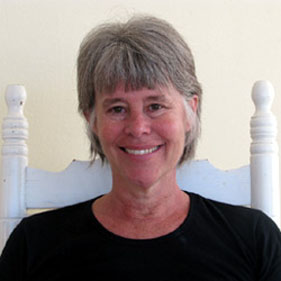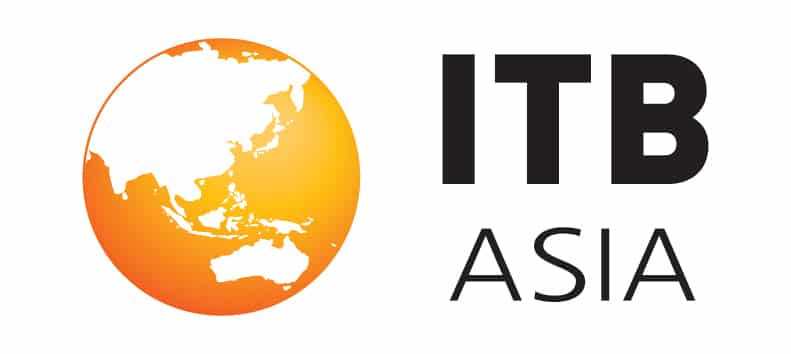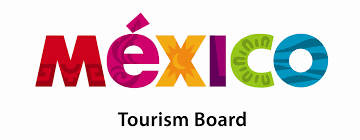Ecotourism Then & Now: Business Pioneers Forge Green Tourism Models
Tuesday, 30 Apr, 2010
0

From amazing profits: authenticity: quality guides and a new age of travel to sophistication and a much larger industry
Ecotourism 20 Years Ago
Initially, Ecotourism attracted a loyal clientele of nature enthusiasts, not mountain climbers, who were more than willing to pay to see wildlife. Pioneers created a sturdy enterprise model that opened new destinations, such as Belize, where travelers could quickly see toucans, Mayan tombs, morpho butterflies and parrot fish all in a 10 day expedition. Writes Megan Epler Wood
Kurt Kutay, who launched Wildland Adventures, based on his background in environmental science, was soon finding that trips to parks like Manuel Antonio in Costa Rica, were gold. His business became a mecca for travelers interested in birds, wildlife and culture – particularly the warm Costa Rican “Ticas”, who had a knack for making visitors feel a part of the family.
Meanwhile, by 1990, Stanley Selengut of Maho Bay Camps in the US Virgin Islands was already proselytizing around the world about his low-tech, low-impact green model for hotels. Stanley was never shy about discussing the “amazing profits” his firm was earning from simple tents on platforms by a sugary sand beach on St. John. And, he was the first to point out that traveler’s frequently care more about simplicity than they do about luxury, which as far as he was concerned only improved the profit margins.
These pioneers and their many partners around the world helped to create what Arthur Frommer described as the “New Age of Travel,” a book first published in 1989. Frommer, the dean of American travel writers, described mass tourism as “dead.” His book described hundreds of unique experiences, which each traveler could tap, even before the Internet, and experience “authenticity.”
The ecotourism business pioneers knew instinctively that their focus should be on wildlife. But it had to be charismatic wildlife, like mountain gorillas, which were becoming available to view for the first time in history thanks to intensive research by wildlife biologists. As the field of wildlife science advanced, it became feasible to see ecosystems with increasing insights into animal behavior and the most intimate secrets of wildlife survival. Darwin’s laboratory on the Galapagos was open for viewing, where visitors could learn why birds became flightless and land-based iguanas became sea creatures. The African plains were converted into a huge observatory for tourists to view the annual drama of millions of wildebeest migrating across the Serengeti. In Asia, India was showing off the exclusive wildlife preserves where the maharajahs had once hunted, and the endangered tiger could be photographed hunting chital deer at dusk.
The early ecotourism pioneers sought to bring these dramatic experiences to average, middle class travelers and remove barriers between people and places. They quickly formed partnerships with local business people in countries around the world, bringing first hand information to their clients on wildlife and culture. A network of inbound operators, who provided the large majority of the know-how and services at the local level, became the bulwark of the ecotourism business model.
In Costa Rica, local businesses Horizontes and Costa Rica Expeditions were the founders of an ever growing number of enterprises which provide sensitive, in-depth experiences with Tica culture and excellent wildlife viewing. In Ecuador, long-time operators such as Metropolitan and Canodros, who made their fortunes running ships in the Galapagos; began to expand to the Oriente where new jungle lodges quickly emerged. Local businesses launched tours based solely on Ecuador’s native culture and biodiversity. In Peru, Macchu Pichu became the launch point for more in-depth explorations of native cultures and the far reaches of Peru’s extraordinary Manu and Tambopata reserves with companies like Rainforest Expeditions, launched by a team of young Peruvians in 1989.
A cottage industry of guidelines and standards for tourism began to blossom based on these early efforts, with hundreds of certification programs launched by the end of the 1990s. But with all this, the business pioneers remained focused on creating educational tour programs, which allowed travelers to understand the places they were visiting. Their tours began in the early morning with wake up calls before dawn to see birds, and ended with fireside chats at night with local guides explaining culture.
The number one hallmark of early ecotourism was its focus on quality local guides. Guiding in countries like Ecuador and Costa Rica became a science and an art form. Local guides had to speak good English, recognize birds in Spanish, English, and Latin, and feel comfortable explaining local cultures. As tours delved into the rain forest and spread out on the savannah, the opportunity to appropriately meet and understand indigenous groups became a highly important focus; from the Masai of Kenya to the Cofan of Ecuador. Increasingly local guides were trained who were Masai and Cofan. In all cases, the interpretation of wildlife and culture was the means to creating an experience for visitors that would leave them moved by what they had learned, and changed by what they had experienced.
Ecotourism Now
The business of ecotourism has not changed dramatically in 20 years, though it has expanded globally. Businesses around the world have increasingly adopted ecotourism principles in an effort to create greener, more low impact tourism opportunities. And, the social and environmental business model has continued to prove to be viable for companies around the world.
In 1994, South Africa emerged from apartheid and became one of the most dynamic and innovative countries in the world for ecotourism, bringing a wide array of new tourism companies to the fore.
Firms like Wilderness Safaris began to spread their wings, developing massive regions for wildlife viewing, with goals to conserve and benefit local people. Wilderness Safaris presently operates privately on 6.5 million acres of land in South Africa with 60 lodges and camps. They are partnering with wilderness conservancies and concessioning properties while maintaining strong partnerships with local communal organizations. They manage hundreds of staff in Botswana, Namibia, Malawi, South Africa, Zambia, Zimbabwe, and the Seychelles. In Namibia alone they have provided entry-level guide training to over 1000 local people in the last 6 years. Wildlife conservation is being supported via a portion of guest revenues to benefit such efforts as Namibia’s Save the Rhino Trust.
International Expeditions (IE) was sold to a larger company in 2000 and then sold again. Steve Cox, the company co-founder, relates that after the first sale the company was not immediately able to continue its investments in environmental conservation and social well-being, but when the TUI group of companies took over, the commitment to sustainable development was greater than ever before.
IE continues forward with their trademark programs in the Iquitos, Peru region working with the local NGO CONAPAC. Together, they are presently reaching 200 villages with school supplies, water treatment kits to purify the untreated downstream effluent from the city of Iquitos, and on-going environmental education programs for children- a program they created and have been building upon for nearly 20 years. They now also assist local enterprises, leveraging microloans to create small scale bakeries and other healthy food products for sale to local residents. An entire regional trading system has emerged built upon the greater good, according to Cox. Cox explains,
“an economy has emerged that benefits from tourism but is not dependent on it. The villages are now creating an ever growing set of products that can also be sold in the burgeoning city of Iquitos.” Cox calls this a “micro-economic civilization.”
In the Caribbean, Maho Bay Camps became a network of lodges, which grew to include Harmony’s off the grid apartments, and Estate Concordia’s Eco-tents and new Eco-studios. The Selengut model has always been to create simple and affordable accommodations with new technologies, such as the Eco-panels he has incorporated into the new Eco-studios.
The ecotourism pioneers shaped a model that has now incorporated a much larger industry, driving innovation and bringing to light the importance of incorporating sustainability principles in all of tourism. As Stanley, Kurt, and others worked closely with TIES; they demanded that the industry take note of principles that would not only help it be green but to grow and attract markets that were seeking experiences that brought them more harmony with the environment, greater support of wildlife and wildlands, more commitment to local well-being, and a greater understanding of the world they lived in. This legacy remains today.
Megan Epler Wood
Valere
Have your say Cancel reply
Most Read
TRAINING & COMPETITION
 United Kingdom
United Kingdom United States
United States Asia Pacific
Asia Pacific












































Dozens fall ill in P&O Cruises ship outbreak
Boy falls to death on cruise ship
Turkish Airlines flight in emergency landing after pilot dies
Unexpected wave rocks cruise ship
Woman dies after going overboard in English Channel